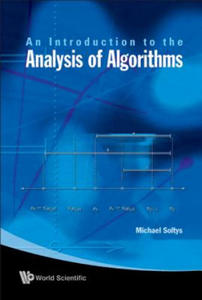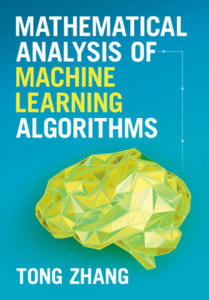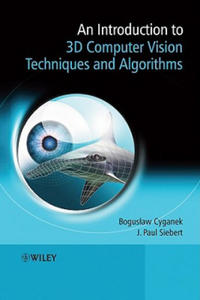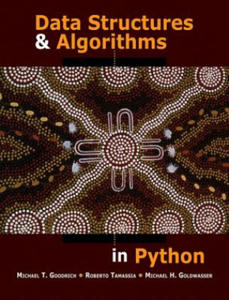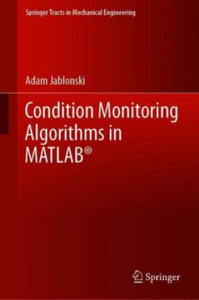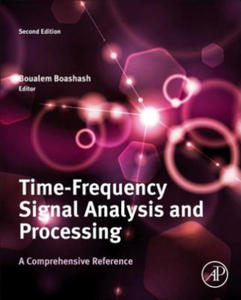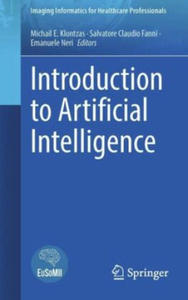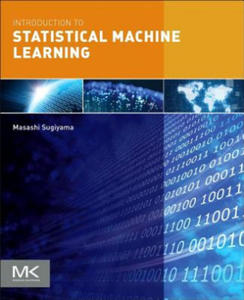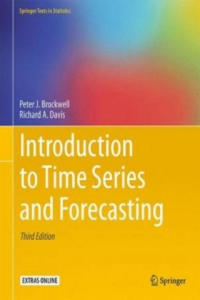libristo introduction to the analysis of algorithms 1235123
- znaleziono 60 produkty w 4 sklepach
Introduction To The Analysis Of Algorithms, An World Scientific Publishing Co Pte Ltd
Książki / Literatura obcojęzyczna
This textbook covers the mathematical foundations of the analysis of algorithms. The gist of the book is how to argue, without the burden of excessive formalism, that a given algorithm does what it is supposed to do. The two key ideas of the proof of correctness, induction and invariance, are employed in the framework of pre/post-conditions and loop invariants. The algorithms considered are the basic and traditional algorithms of computer science, such as Greedy, Dynamic and Divide & Conquer. In addition, two classes of algorithms that rarely make it into introductory textbooks are discussed. Randomized algorithms, which are now ubiquitous because of their applications to cryptography; and Online algorithms, which are essential in fields as diverse as operating systems (caching, in particular) and stock-market predictions. This self-contained book is intended for undergraduate students in computer science and mathematics.
Sklep: Libristo.pl
Introduction to the Design & Analysis of Algorithms Pearson College Div
Książki / Literatura obcojęzyczna
Based on a new classification of algorithm design techniques and a clear delineation of analysis methods, "Introduction to the Design and Analysis of Algorithms" presents the subject in a coherent and innovative manner. Written in a student-friendly style, the book emphasizes the understanding of ideas over excessively formal treatment while thoroughly covering the material required in an introductory algorithms course. Popular puzzles are used to motivate students' interest and strengthen their skills in algorithmic problem solving. Other learning-enhancement features include chapter summaries, hints to the exercises, and a detailed solution manual.
Sklep: Libristo.pl
An Introduction To The Analysis Of Algorithms
Książki Obcojęzyczne>Angielskie>Computing & information technology>Computer programming / software development>Algorithms & data structure...
0x0152b6cf00000000
Sklep: Gigant.pl
Mathematical Analysis of Machine Learning Algorithms Cambridge University Press
Książki / Literatura obcojęzyczna
Introduction to the mathematical foundation for understanding and analyzing machine learning algorithms for AI students and researchers.
Sklep: Libristo.pl
Introduction to 3D Computer Vision Techniques and Algorithms John Wiley & Sons Inc
Książki / Literatura obcojęzyczna
Computer vision encompasses the construction of integrated vision systems and the application of vision to problems of real-world importance. The process of creating 3D models is still rather difficult, requiring mechanical measurement of the camera positions or manual alignment of partial 3D views of a scene. However using algorithms, it is possible to take a collection of stereo-pair images of a scene and then automatically produce a photo-realistic, geometrically accurate digital 3D model. This book provides a comprehensive introduction to the methods, theories and algorithms of 3D computer vision. Almost every theoretical issue is underpinned with practical implementation or a working algorithm using pseudo-code and complete code written in C++ and MatLab(r). There is the additional clarification of an accompanying website with downloadable software, case studies and exercises.Organised in three parts, Cyganek and Siebert give a brief history of vision research, and subsequently: present basic low-level image processing operations for image matching, including a separate chapter on image matching algorithms; explain scale-space vision, as well as space reconstruction and multiview integration; demonstrate a variety of practical applications for 3D surface imaging and analysis; provide concise appendices on topics such as the basics of projective geometry and tensor calculus for image processing, distortion and noise in images plus image warping procedures. An Introduction to 3D Computer Vision Algorithms and Techniques is a valuable reference for practitioners and programmers working in 3D computer vision, image processing and analysis as well as computer visualisation. It would also be of interest to advanced students and researchers in the fields of engineering, computer science, clinical photography, robotics, graphics and mathematics.
Sklep: Libristo.pl
An Introduction to Quantum Computing Algorithms Springer, Basel
Książki / Literatura obcojęzyczna
In 1994 Peter Shor [65] published a factoring algorithm for a quantum computer that finds the prime factors of a composite integer N more efficiently than is possible with the known algorithms for a classical com puter. Since the difficulty of the factoring problem is crucial for the se curity of a public key encryption system, interest (and funding) in quan tum computing and quantum computation suddenly blossomed. Quan tum computing had arrived. The study of the role of quantum mechanics in the theory of computa tion seems to have begun in the early 1980s with the publications of Paul Benioff [6]' [7] who considered a quantum mechanical model of computers and the computation process. A related question was discussed shortly thereafter by Richard Feynman [35] who began from a different perspec tive by asking what kind of computer should be used to simulate physics. His analysis led him to the belief that with a suitable class of "quantum machines" one could imitate any quantum system.
Sklep: Libristo.pl
Introduction to Nonlinear Finite Element Analysis Springer-Verlag New York Inc.
Książki / Literatura obcojęzyczna
Introduction to Nonlinear Finite Element Analysis will introduce the key concepts of nonlinear finite element analysis procedures. The book will explain the fundamental theories of the field, and provide instructions on how to apply the concepts to solving practical engineering problems. Instead of covering many nonlinear problems, only four representative problems are addressed: nonlinear elasticity, elastoplasticity, contact problem, and dynamic problem. The book is written independent of any particular software, but tutorials and examples using four commercial programs are included as appendices: ANSYS, NASTRAN, ABAQUS, and MATLAB. In particular, the MATLAB program will include all source codes so that students can develop their own material models, or different algorithms.
Sklep: Libristo.pl
Data Structures and Algorithms in Python John Wiley & Sons Inc
Książki / Literatura obcojęzyczna
Based on the authors' market leading data structures books in Java and C++, this book offers a comprehensive, definitive introduction to data structures in Python by authoritative authors. Data Structures and Algorithms in Python is the first authoritative object-oriented book available for Python data structures. Designed to provide a comprehensive introduction to data structures and algorithms, including their design, analysis, and implementation, the text will maintain the same general structure as Data Structures and Algorithms in Java and Data Structures and Algorithms in C++. Begins by discussing Python's conceptually simple syntax, which allows for a greater focus on concepts. Employs a consistent object-oriented viewpoint throughout the text. Presents each data structure using ADTs and their respective implementations and introduces important design patterns as a means to organize those implementations into classes, methods, and objects. Provides a thorough discussion on the analysis and design of fundamental data structures. Includes many helpful Python code examples, with source code provided on the website.Uses illustrations to present data structures and algorithms, as well as their analysis, in a clear, visual manner. Provides hundreds of exercises that promote creativity, help readers learn how to think like programmers, and reinforce important concepts. Contains many Python-code and pseudo-code fragments, and hundreds of exercises, which are divided into roughly 40% reinforcement exercises, 40% creativity exercises, and 20% programming projects.
Sklep: Libristo.pl
Modification of Algorithms for Determination of Short Kinematic Vectors from GPS Data Uniwersytet Warmińsko-Mazurski w Olsztynie
INNE
The main purpose of this work was to elaborate GPS relative kinematic positioning algorithms, based on phase measurements, which would give better positioning results than those obtained from commercial software. It is assumed that the vectors are short, i.e. their lengths are equal to about 1 km. It often happens, especially under conditions of a small number of observed satellites and breaks in satellite signal reception, that results from standard, commercial software are worse than expected. It is caused mainly by the occurrence of cycle slips in phase measurements and a too long time needed for ambiguity resolution. To verify the algorithms proposed, a system of computer programs was created and tested. Analysis of the results shows that the methods implemented cope well with ambiguity resolution and cycle slip detection and repair, in many cases better than the commercial software. Generally, the software is based on the Kalman filtering technique and double differenced phase measurements. It allows to perform all calculations required for the computation of relative coordinates of a GPS antenna being positioned: - autonomous position calculation, together with receiver clock corrections, on the basis of observed pseudoranges, applying atmospheric corrections, - ambiguity resolution (both for the first epoch of observations and for epochs occurring after complete loss of lock, when the phase observations drop to zero), - cycle slips repair, - computation of 3D corrections to be applied to autonomous positions to obtain relative positions of a (generally) moving station, - the case of a moving reference station was also studied - it was found that the algorithms derived can be applied to determine a vector between two (generally) moving GPS stations. The innovations applied concern cycle slips repair and ambiguity resolution. Algorithms for cycle slips recovering were formulated on the basis of the existing methods. Two of them, ensuring proper elimination of jumps in phase observations, were chosen. These are: analysis of triple differences (corrected, if necessary, for the motion of the positioned antenna on the basis of Doppler measurements) and analysis of ionospheric residuals. It was found that the first method eliminates cycle slips bigger than 2-3 cycles, and the other one corrects the remaining small slips and assigns the slip to L1 or L2 phase observations. In the case of complete lock loss with the satellite and when the same satellite is observed again in further epochs, cycle slips are not repaired. Instead, new ambiguity is found. The method of ambiguity resolution is based on the technique of searching in the wide lane ambiguity domain. The final criterion for admitting the set of ambiguity parameters is the root mean square error of solution obtained for L1 ambiguities associated with the computed wide lane values. When the number of observed satellites was 6 or more, it was confirmed that correct results can be obtained on the basis of observations for one epoch only. In the case of a smaller number of visible satellites, two further cases are examined by the program. If it is the first epoch of observations, then the data from next epochs have to be used. If the positions of previous epochs had already been determined, the procedure of fixing ambiguities is augmented by coordinates predicted with the Kalman filter. In most such cases the number of 5 or 4 satellites is sufficient to fix the ambiguities correctly. Since carrier phase ambiguity resolution is the key to fast and precise GPS positioning, a search technique was additionally studied, using a method originally elaborated for this purpose. The method enables to test whether the solution is unique on the basis of a given configuration of satellites (their number, elevations and azimuths). After the application of the above-mentioned procedures for ambiguity resolution and cycle slips repair the results obtained from the new software were generally better. Analysis of the results shows that they are free of gross errors coming from not resolved ambiguities or not properly eliminated cycle slips. Apart from better results, achieved first of all under difficult observational conditions, the new program is characterized by another advantage when compared with commercial software: all of the algorithms used are known exactly, they can be changed and improved, and the results can be properly interpreted. MODYFIKACJA ALGORYTMÓW WYZNACZANIA KRÓTKICH WEKTORÓW KINEMATYCZNYCH NA PODSTAWIE DANYCH GPS Celem pracy jest opracowanie i sprawdzenie algorytmów, służących do obliczeń kinematycznych wektorów GPS, dających lepsze wyniki niż te, które uzyskuje się na podstawie zakupionych programów firmowych. W pracy założono, że opracowywane wektory są krótkie - długości 1 km. W praktyce często spotykamy się z taką sytuacją, gdy wyniki otrzymane na podstawie zakupionych programów są gorsze niż deklarowane przez twórców oprogramowania; szczególnie dotyczy to przypadków, gdy ilość obserwowanych satelitów jest mała lub występują przerwy w odbiorze sygnałów satelitarnych. Otrzymywane niskie dokładności są spowodowane albo źle określoną liczbą zgubionych cykli w pomiarach fazowych (nieciągłością ' tych pomiarów), albo zbyt długim czasem potrzebnym na rozwiązanie parametrów nieoznaczoności. Stworzono i przetestowano system programów komputerowych, aby sprawdzić poprawność opracowanych algorytmów. Analiza otrzymanych wyników dowodzi, że zastosowane metody zapewniają szybkie rozwiązanie parametrów nieoznaczoności oraz poprawną eliminację nieciągłości w pomiarach fazowych. Stworzone oprogramowanie opiera się na technice filtru Kalmana i podwójnie zróżnicowanych pomiarach fazowych. Oprogramowanie to wykonuje wszystkie etapy obliczeń potrzebnych do wyznaczenia względnych współrzędnych GPS: - wyznaczanie pozycji autonomicznych wraz z poprawkami chodu zegarów odbiorników; ten etap obliczeń jest wykonywany na podstawie pomierzonych pseudoodległości, z zastosowa niem odpowiednich poprawek atmosferycznych; - rozwiązanie nieoznaczoności (zarówno dla pierwszej epoki obserwacyjnej, jak i dla tych epok, które występują po całkowitej utracie łączności z satelitą; - poprawianie pomiarów fazowych ze względu na występujące nieciągłości; - obliczanie poprawek do trójwymiarowych współrzędnych autonomicznych stacji wyznaczanej (w ogólności ruchomej) przy pozycjonowaniu względnym; - zbadano także przypadek ruchomej stacji referencyjnej - stwierdzono poprawność działania wyprowadzonych algorytmów do obliczania wektora między dwiema ruchomymi stacjami GPS. Zastosowane ulepszenia algorytmiczne dotyczą eliminacji nieciągłości i rozwiązywania parametrów nieoznaczoności. Algorytmy służące do eliminacji nieciągłości opracowano na podstawie istniejących metod, spośród których wybrano dwie, współpracujące ze sobą: badanie potrójnych różnic (z możliwością uprzedniego uwzględnienia prędkości pozycjonowanej stacji, obliczonych na podstawie pomiarów dopplerowskich) oraz analiza poprawek jonosferycznych. Sprawdzono, że pierwsza z wymienionych metod eliminuje nieciągłości pomiaru fazowego większe niż 2-3 cykle, podczas gdy druga poprawia pozostałe nieciągłości, przyporządkowując je jednocześnie pomiarom fazowym na częstotliwości L1 lub L2. W przypadku całkowitej utraty łączności danego satelity z odbiornikiem i ponowną obserwacją w dalszych epokach pomiarowych, zamiast poszukiwania nieciągłości pomiaru fazowego, znajdowane są nowe parametry nieoznaczoności dla tego satelity. Opracowana metoda rozwiązywania parametrów nieoznaczoności opiera się na technice poszukiwania w dziedzinie nieoznaczoności szerokościeżkowych. Ostatecznym kryterium przyjęcia zestawu parametrów nieoznaczoności jest średni błąd kwadratowy rozwiązania otrzymanego na częstotliwości L1, z wykorzystaniem parametrów nieoznaczoności dla tej częstotliwości, otrzymanych na podstawie odpowiednich wartości szerokościeżkowych. Jeżeli liczba obserwowanych satelitów wynosi 6 lub więcej, sprawdzono, że poprawne rozwiązanie nieoznaczoności może być otrzymane na podstawie obserwacji z jednej tylko epoki. Przy mniejszej liczbie obserwowanych satelitów, rozróżnia się dwa przypadki. Jeśli jest to pierwsza epoka obserwacji, należy wykorzystać dane z dalszych epok obserwacyjnych. Jeśli natomiast sytuacja taka występuje już po obliczeniu pozycji dla poprzednich epok, procedura rozwiązywania nieoznaczoności jest wspomagana predykcją współrzędnych na tę epokę, otrzymaną z filtru Kalmana. W zbadanych przypadkach liczba 4 lub 5 satelitów była wystarczająca do poprawnego rozwiązania nieoznaczoności. Ponieważ poprawne rozwiązanie parametrów nieoznaczoności jest podstawą szybkiego i dokładnego pozycjonowania techniką GPS, przeprowadzono dodatkowe badania techniki poszukiwawczej, wykorzystując metodę opracowaną specjalnie w tym celu. Metoda ta umożliwia zbadanie jednoznaczności wyznaczenia parametrów nieoznaczoności na podstawie zadanej konfiguracji satelitów (ich ilości, elewacji i azymutów). Po zastosowaniu opisanych algorytmów dotyczących rozwiązywania nieoznaczoności i eliminacji nieciągłości w pomiarach fazowych, stwierdzono, że uzyskano poprawę dokładności otrzymywanych wyznaczeń. Analiza wyników pokazuje, że są one wolne od błędów grubych, pochodzących od źle wyznaczonych parametrów nieoznaczoności lub nieciągłości pomiarów fazowych. Oprócz lepszych wyników, które przede wszystkim są otrzymywane w złych warunkach obserwacyjnych, jest jeszcze jedna, ważna zaleta posiadania własnego oprogramowania GPS. W oprogramowaniu tym znane są wszystkie algorytmy, można je zmieniać i uzupełniać w zależności od potrzeb, umożliwia to także poprawną interpretację otrzymywanych wyników. Spis treści: 1. Introduction 2. GPS algorithms 2.1. Observation equations 2.2. Alternative form of the Kalman filter 2.3. Satellite position determination 2.4. Tropospheric delay 2.5. Ionospheric corrections 2.6. Models for single point positioning 2.7. Models for relative positioning with carrier phases 3. Considered biases and errors 3.1. Ambiguity resolution 3.1.1. Further studies of the search method 3.2. Cycle slips 3.3. Multipath 4. Results 4.1. The car experiment 4.2. The ship experiment 4.3. Conclusions and Summary References Abstract Abstrak
Sklep: Księgarnia Techniczna
Condition Monitoring Algorithms in MATLAB (R) Springer Nature Switzerland AG
Książki / Literatura obcojęzyczna
This book offers the first comprehensive and practice-oriented guide to condition monitoring algorithms in MATLAB
Sklep: Libristo.pl
Time-Frequency Signal Analysis and Processing Elsevier Science Publishing Co Inc
Książki / Literatura obcojęzyczna
"Time-Frequency Signal Analysis and Processing" ("TFSAP") is a collection of theory and algorithms used for the analysis and processing of non-stationary signals, as found in a wide range of applications including telecommunications, radar, and biomedical engineering. This book gives the university researcher and R&D engineer insight into how to use TFSAP methods to develop the engineering application systems they are looking to implement. A comprehensive tutorial introduction to "Time-Frequency Signal Analysis and Processing" TFSAP, accessible to anyone who has taken a first course in signals and systems; Key theory and algorithms, concisely presented by some of the leading authorities on the respective topics. It provides applications, written by leading researchers, showing how to use TFSAP methods to develop. Availability of a software package on TFSAP which consists of the most important algorithms described in the book so that they are ready for use with an easy GUI (Graphic User Interface).New sections on Efficient Fast Algorithms and a section "Getting Started" which allows users to start using the algorithms on simulated and real examples, compare the results presented in the book and then insert the algorithms in their own application and adapt as needed (Source code is provided). Two new chapters, 23 new sections, all sections include the latest references. New topics in this edition include: Efficient algorithms (with source code), the EMD, the S transform, time-frequency modeling, more mathematical foundations, relationship between QTFDs and Wavelet Transforms; new advanced applications such as cognitive radio; watermarking; noise reduction in the time-frequency domain; a time-frequency approach for spike detection; algorithms for "Time-Frequency Image Processing"; a full new chapter dedicated to Time-Frequency applications in neuroscience; a practical new chapter to help new users get started.
Sklep: Libristo.pl
Introduction to Artificial Intelligence Springer, Berlin
Książki / Literatura obcojęzyczna
This book aims to provide physicians and scientists with the basics of Artificial Intelligence (AI) with a special focus on medical imaging. The contents of the book provide an introduction to the main topics of artificial intelligence currently applied on medical image analysis. The book starts with a chapter explaining the basic terms used in artificial intelligence for novice readers and embarks on a series of chapters each one of which provides the basics on one AI-related topic. The second chapter presents the programming languages and available automated tools that enable the development of AI applications for medical imaging. The third chapter endeavours to analyse the main traditional machine learning techniques, explaining algorithms such as random forests, support vector machines as well as basic neural networks. The applications of those machines on the analysis of radiomics data is expanded in the fourth chapter to allow the understanding of algorithms used to build classifiers for the diagnosis of disease processes with the use of radiomics. Chapter five provides the basics of natural language processing which has revolutionized the analysis of complex radiological reports and chapter six affords a succinct introduction to convolutional neural networks which have revolutionized medical image analysis enabling automated image-based diagnosis, image enhancement (e.g. denoising), protocolling etc. The penultimate chapter provides an introduction to data preprocessing for use in the aforementioned artificial intelligence applications. The book concludes with a chapter demonstrating AI-based tools already in radiological practice while providing an insight about the foreseeable future.It will be a valuable resource for radiologists, computer scientists and postgraduate students working on medical image analysis.
Sklep: Libristo.pl
Introduction to Statistical Machine Learning Elsevier Books
Książki / Literatura obcojęzyczna
Machine learning allows computers to learn and discern patterns without actually being programmed. When Statistical techniques and machine learning are combined together they are a powerful tool for analysing various kinds of data in many computer science/engineering areas including, image processing, speech processing, natural language processing, robot control, as well as in fundamental sciences such as biology, medicine, astronomy, physics, and materials. Introduction to Statistical Machine Learning provides a general introduction to machine learning that covers a wide range of topics concisely and will help you bridge the gap between theory and practice. Part I discusses the fundamental concepts of statistics and probability that are used in describing machine learning algorithms. Part II and Part III explain the two major approaches of machine learning techniques; generative methods and discriminative methods. While Part III provides an in-depth look at advanced topics that play essential roles in making machine learning algorithms more useful in practice. The accompanying MATLAB/Octave programs provide you with the necessary practical skills needed to accomplish a wide range of data analysis tasks. Provides the necessary background material to understand machine learning such as statistics, probability, linear algebra, and calculus.Complete coverage of the generative approach to statistical pattern recognition and the discriminative approach to statistical machine learning.Includes MATLAB/Octave programs so that readers can test the algorithms numerically and acquire both mathematical and practical skills in a wide range of data analysis tasksDiscusses a wide range of applications in machine learning and statistics and provides examples drawn from image processing, speech processing, natural language processing, robot control, as well as biology, medicine, astronomy, physics, and materials.
Sklep: Libristo.pl
Introduction to Time Series and Forecasting Springer International Publishing AG
Książki / Literatura obcojęzyczna
This book teaches time series and forecasting methods with an emphasis on the fundamentals of data set analysis. It is designed for use in a full-year introduction to univariate and multivariate time series course. This book assumes a knowledge only of basic calculus, matrix algebra, and elementary statistics. The logic and tools of model-building for stationary and nonstationary time series are developed in detail and numerous exercises, many of which make use of the included computer package, provide the reader with ample opportunity to develop skills in this area. The core of the book covers stationary processes, ARMA and ARIMA processes, multivariate time series and state-space models, with an optional chapter on spectral analysis. Additional topics include harmonic regression, the Burg and Hannan-Rissanen algorithms, unit roots, regression with ARMA errors, structural models, the EM algorithm, generalized state-space models with applications to time series of count data, exponential smoothing, the Holt-Winters and ARAR forecasting algorithms, transfer function models and intervention analysis. Brief introductions are also given to cointegration and to nonlinear, continuous-time and long-memory models. The free time series package that accompanies this book is ITSM2000, though the methods can be easily applied to time series packages in other programs, including R. The programs in ITSM are all menu-driven so that the reader can immediately apply the techniques in the book to time series data, with a minimal investment of time in the computational and algorithmic aspects of the analysis.
Sklep: Libristo.pl
szukaj w Kangoo libristo introduction to the analysis of algorithms 1235123
Sklepy zlokalizowane w miastach: Warszawa, Kraków, Łódź, Wrocław, Poznań, Gdańsk, Szczecin, Bydgoszcz, Lublin, Katowice
Szukaj w sklepach lub całym serwisie
1. Sklepy z libristo pl introduction to the analysis of algorithms 1235123
2. Szukaj na wszystkich stronach serwisu
t1=0.075, t2=0, t3=0, t4=0.015, t=0.075

